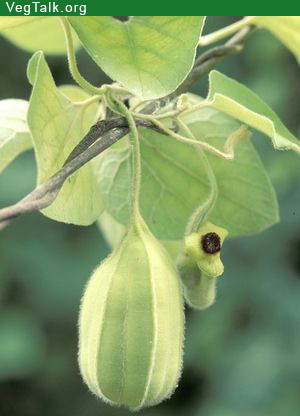
General info about Fruit
Woodland Garden; Canopy;
Hackberry Celtis is a genus of about 60-70 species of deciduous trees widespread in warm temperate regions of the Northern Hemisphere, in southern Europe, southern and eastern Asia, and southern and central North America, and south to central Africa. They are generally medium-sized trees, reaching 10-25 m tall, rarely up to 40 m tall.
How to choose a ripe and fresh Fruit
Round drupe, 1/4 to 3/8 inch in diameter, turning orange-red to dark purple when ripe, flesh is thin and quite dry but edible and sweet, enclosing a large pit, maturing in early fall.
Ways to prepare and serve the Fruit
Edible Parts: Fruit; Seed.
Fruit - raw. Very sweet and pleasant tasting, they can be eaten out of hand or can be used for making jellies, preserves etc. The fruit is often produced abundantly in Britain, it is about the size of a blackcurrant, but there is very little flesh surrounding a large seed and it is therefore a very fiddly crop. he fruit is dark orange to purple- or blue-black when fully ripe, usually about 7-11mm in diameter, though occasionally up to 20mm. The flesh is dry and mealy but with a pleasant sweet taste. Seed. No more details. The fruit and seed can be ground up finely together and used as a flavouring. The N. American Indians ate them with parched corn.
Health Benefits and Warnings of eating Fruit
Medical users:
Miscellany; VD.
An extract obtained from the wood has been used in the treatment of jaundice. A decoction of the bark has been used in the treatment of sore throats. When combined with powdered shells it has been used to treat VD
Other Uses
Dye; Fuel; Shelterbelt; Wood.
A dye is obtained from the roots. No more details are given. Fairly wind-tolerant, it can be planted as part of a shelterbelt. Wood - rather soft, weak, coarse-grained, heavy. It weighs 45lb per cubic foot and is sometimes used commercially for cheap furniture, veneer, fencing fuel etc.
Classification
Previously included either in the elm family Ulmaceae or their own family the Celtidaceae, genetic analysis by the Angiosperm Phylogeny Group has shown they are best placed in the hemp family Cannabaceae.
The leaves are alternate, simple, 3-15 cm long, ovate-acuminate with a long pointed tip, and evenly serrated margins.
Selected species
• Celtis africana – White Stinkwood
• Celtis australis – European Hackberry
• Celtis bungeana – Bunge’s Hackberry
• Celtis caucasica – Caucasian Hackberry
• Celtis integrifolia – African Hackberry
• Celtis jessoensis – Japanese Hackberry
• Celtis koraiensis – Korean Hackberry
• Celtis labilis – Hubei Hackberry
• Celtis laevigata – Southern Hackberry or Sugar Hackberry or Sugarberry
• Celtis occidentalis – Common Hackberry
• Celtis reticulata – Netleaf Hackberry
• Celtis sinensis – Chinese Hackberry
• Celtis tenuifolia – Dwarf Hackberry
• Celtis tournefortii – Oriental Hackberry